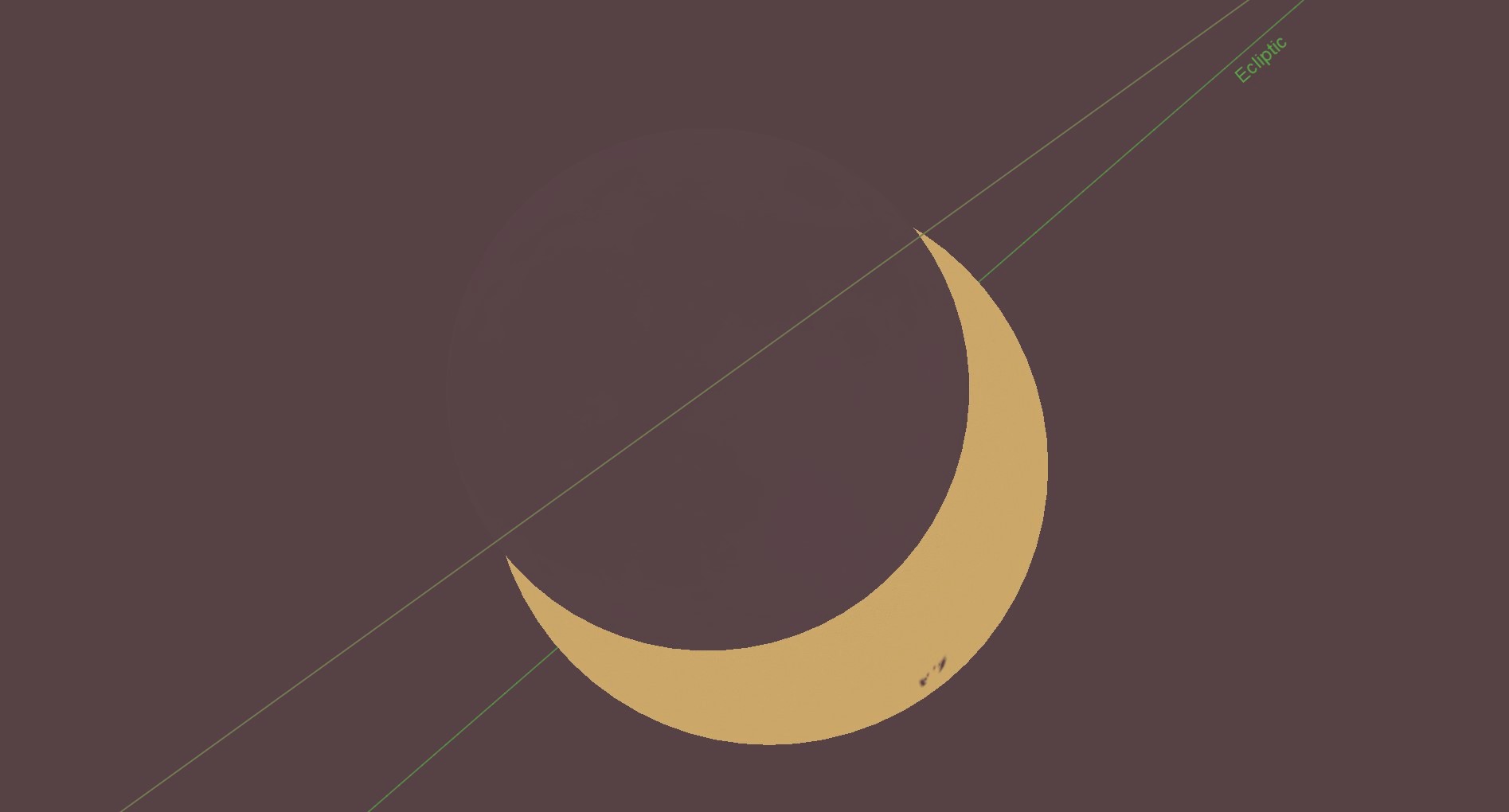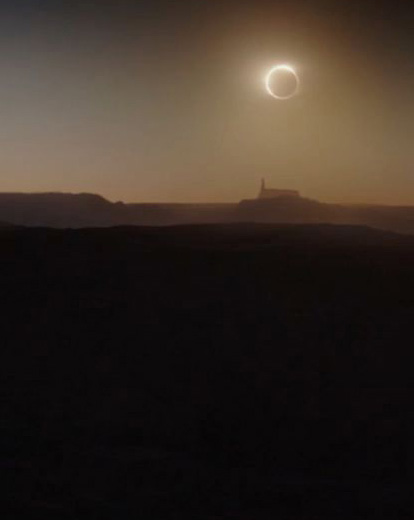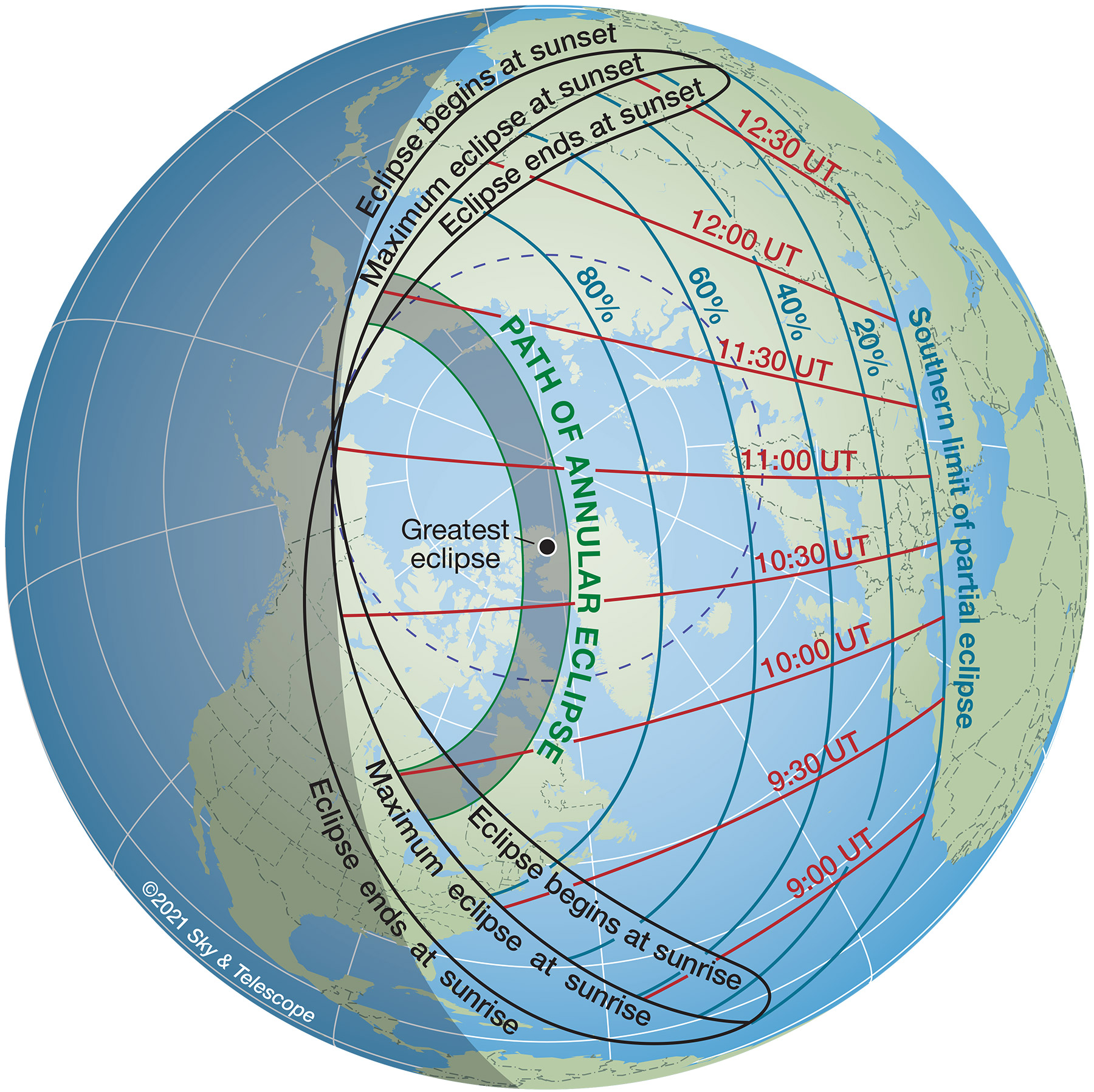The 'ring of fire' solar eclipse of 2021 will look like the 'Death Star' in front of the sun, astronomer says

If you snap a photo of the 2021 annular solar eclipse let us know! You can send images and comments to spacephotos@space.com.
People across the Northern Hemisphere will be able to spot a "ring of fire" in the sky as an annular solar eclipse moves across our planet this Thursday (June 10).
Solar eclipses happen when the moon moves directly between the sun and Earth, casting a shadow on our planet and blocking out at least some of the sun's light. This Thursday at sunrise, we can look forward to an annular solar eclipse, which occurs when the moon is too far away from Earth in its elliptical orbit to completely block out the sun like it does during a total solar eclipse. Instead, it leaves the outer ring of the sun exposed, creating the appearance of a "ring of fire" in the sky during the only annular solar eclipse of 2021.
"It is not going to look like your regular sun," Jackie Faherty, an astrophysicist at the American Museum of Natural History in New York City, told Space.com. While the full "ring of fire" will be visible from the northernmost latitudes (including the North Pole and parts of Greenland and Canada), most viewers will see only a partial version of the eclipse, which will be visible from parts of North America, Europe and Asia.
A partial eclipse, in which the moon appears to take a bite out of the sun, may not be as impressive as an annular "ring of fire" eclipse. However, Faherty noted that even a partial eclipse can be incredible to witness. Thursday's partial eclipse will look like "the 'Death Star' is in front of the sun as it's rising," she said, referring to the moon-size space weapon from "Star Wars."
Webcasts: How to watch the 'ring of fire' solar eclipse online on June 10
Related: When, where and how to see the 'ring of fire' solar eclipse of 2021
"From our perspective, it covers a lot of it. It covers enough of it that you end up with this effect that there will be a black dot with the rest of the sun shining around it, which ends up looking like a ring of fire," she said.
"This one's kind of cool," Faherty said, "because the way the shadow of the moon is going to pass over the Earth, it's going to pass over the North Pole." She added that it's actually quite rare for a solar eclipse to pass over the North Pole.
Breaking space news, the latest updates on rocket launches, skywatching events and more!
In the United States, the partial eclipse will be visible along areas of the Southeast, Northeast, Midwest and even in Northern Alaska, and skywatchers can look for the event in the morning sky close to the horizon and just before or during sunrise. (But do not look directly at the rising sun without proper eye protection.)
Skywatchers in much of Canada and parts of the Caribbean, Europe, Asia and northern Africa will also have visibility of a partial solar eclipse.
"The sun will be rising, while partially eclipsed," Faherty added. "In New York, it'll be about 72% or 73% eclipsed as it rises … [and] as it rises, it's close to the horizon, so you can see it with buildings or with trees," Faherty said.
You can check out NASA's Scientific Visualization Studio for more detailed information about viewing the eclipse from your place of residence. For all those looking to see the eclipse, however good your visibility may be, make sure to wear protective eclipse glasses as looking at an eclipse without protective eyewear can cause serious damage.
Now, recently, skywatchers had fun viewing the Super Flower Blood Moon of May, the only total lunar eclipse of the year. And Faherty explained that it's no coincidence that the two eclipses are happening so close to one another.
"Most people might not realize that these eclipses chase each other," she said. "You get lunar eclipses and solar eclipses back to back. And the reason for that is that the moon going around the Earth, it's not perfectly circular, but a near-perfectly circular orbit when it's lined up.
"So, it's kind of off the plane of the Earth-sun system by about five degrees, which is why we don't get total lunar and total solar eclipses every month. But when you do get a total lunar eclipse, you've got a total solar eclipse on its way to because it means that the system has come into alignment."
Email Chelsea Gohd at cgohd@space.com or follow her on Twitter @chelsea_gohd. Follow us on Twitter @Spacedotcom and on Facebook.

Chelsea “Foxanne” Gohd joined Space.com in 2018 and is now a Senior Writer, writing about everything from climate change to planetary science and human spaceflight in both articles and on-camera in videos. With a degree in Public Health and biological sciences, Chelsea has written and worked for institutions including the American Museum of Natural History, Scientific American, Discover Magazine Blog, Astronomy Magazine and Live Science. When not writing, editing or filming something space-y, Chelsea "Foxanne" Gohd is writing music and performing as Foxanne, even launching a song to space in 2021 with Inspiration4. You can follow her on Twitter @chelsea_gohd and @foxannemusic.


